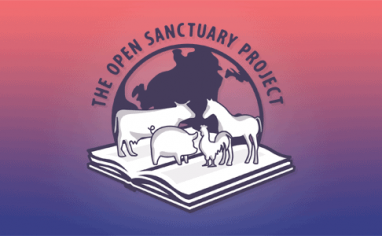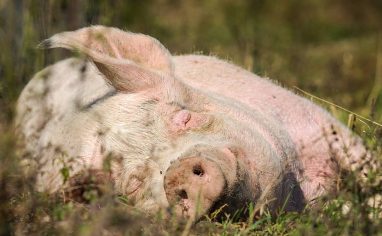
Subscribe To The Open Sanctuary Podcast
If you’d like to get the latest episodes of The Open Sanctuary Podcast, you can subscribe for free on all Podcast platforms, including Apple Podcasts and Spotify!
Episode Notes
Executive DirectorThe individual formally in charge of final decision making at an organization, who sometimes works closely with the organization’s Board of Directors. Sometimes a Founder is an Executive Director, especially early in a nonprofit’s growth stages. Mckenzee and NonprofitA non-governmental organization whose primary purpose is something other than selling goods or services. Specialist Julia discuss how animal sanctuaries differ from petting zoosOrganizations where animals, either rescued, bought, borrowed, or bred, are kept, typically for the benefit of human visitor interest.. While this topic might seem evident to many in the sanctuary movement, expectations from the public based on past experiences might lead to conflations between the two environments. We also discuss how animal sanctuaries and advocates can educate the public and avoid creating unsafe dynamics between sanctuary residents and visitors.
—
This Episode’s Referenced Open Sanctuary Project Resources:
- The Differences Between An Animal Sanctuary And Petting Zoos | The Open Sanctuary Project
- What Defines An Animal Sanctuary? | The Open Sanctuary Project
- Avoiding HarmThe infliction of mental, emotional, and/or physical pain, suffering, or loss. Harm can occur intentionally or unintentionally and directly or indirectly. Someone can intentionally cause direct harm (e.g., punitively cutting a sheep's skin while shearing them) or unintentionally cause direct harm (e.g., your hand slips while shearing a sheep, causing an accidental wound on their skin). Likewise, someone can intentionally cause indirect harm (e.g., selling socks made from a sanctuary resident's wool and encouraging folks who purchase them to buy more products made from the wool of farmed sheep) or unintentionally cause indirect harm (e.g., selling socks made from a sanctuary resident's wool, which inadvertently perpetuates the idea that it is ok to commodify sheep for their wool). To Animals At Your Animal Sanctuary | The Animal Sanctuary Project
- MicrosanctuaryA microsanctuary is a small scale community of human and nonhuman (generally “unconventional or farmed”) animal companions, who live together in a chosen shared lifestyle and in commitment to ending the oppression of all beings. Microsanctuaries adhere to the notion that no nonhuman member of the community should “serve a purpose.” Microsanctuaries can exist in any context: rural, suburban, or urban. A microsanctuary can consist of as small a community as one animal and one human caregiver. For more information on microsanctuary please refer to the Microsanctuary Resource Center. Resource Center
- An Introduction To Fostering Agency In Farmed AnimalsA species or specific breed of animal that is raised by humans for the use of their bodies or what comes from their bodies. At Your Animal Sanctuary | The Open Sanctuary Project
- A Guide To Fostering Farmed AnimalA species or specific breed of animal that is raised by humans for the use of their bodies or what comes from their bodies. Agency In Sanctuary Education | The Open Sanctuary Project
Episode Transcript (Auto-GeneratedThe following content was transcribed through an automated process and may contain transcription errors or misspellings.)
Julia Magnus: Welcome to another episode of the Open Sanctuary Podcast. I’m Julia. I’m the nonprofit specialist, and I’m so delighted to be talking with my friend and director Mckenzee Griffler. Today we’re excited to have a discussion about what might to some who’ve been in sanctuary work for a long time seem like kind of a basic distinction, but it does bring up a few of what we call OSP fundamental resources. So this is the question of the differences between an animal sanctuary and petting zoos. We feel the discussion is important both for newcomers to this work and even for veterans, as it raises important issues around nuanced questions like individuality, agency, consent, lifelong care, and more. These are areas that we believe it’s always helpful for sanctuaries to revisit, as there’s always potential for refinement and growth. So, with that said, Mckenzee, you want to dive in?
Mckenzee Griffler: I would be very happy to, Julia. And I think there are a lot of people both inside and outside of the sanctuary movement that it would be helpful to have this information on hand, because I know a lot of animal lovers in my life who sometimes make statements about sanctuaries, about visiting sanctuaries, that makes me say, “Hmm, that’s interesting.” And I think it can be helpful to elucidate the specific differences between these two structures of animal organizations in order to point out the fundamental difference in values and purpose between the two of them. Even if for somebody who’s not quite aware of these things, looking in from the outside, especially like social media posts or event advertisements, they might have a hard time distinguishing the two. So that’s really why I think it’s important for the entire community to be able to identify the differences in a simple series of ways.
Julia Magnus: I totally agree. So why don’t we start with a giant air quotes? Easy question. What defines an animal sanctuary and what’s in that name anyway?
Mckenzee Griffler: You know, I think that’s a great place to start, and it’s a great complication to start with, because animal sanctuary as a term does not carry a strict legal or regulatory definition, certainly not in the United States. And if you throw in the phrase farmed animal sanctuaryAn animal sanctuary that primarily cares for rescued animals that were farmed by humans., you’re even taking another layer of not a regulated term. So the only act of the US government that might have anything to do with this would be the federal Animal WelfarePractices and policies that promote the well-being of nonhuman animals, specifically their health and comfort. Act, and that has no sort of recognition of the term farm sanctuary or farm sanctuary standards, or even farm sanctuary residents. Farmed animal sanctuariesAnimal sanctuaries that primarily care for rescued animals that were farmed by humans., in fact, fall under the same basic USDAThe United States Department of Agriculture, a government department that oversees agriculture and farmed animals. agricultural standards as any other agricultural operation. So because of this lack of formal and legal definition, many organizations worldwide would use the term animal sanctuary to describe their missionThe stated goals and activities of an organization. An animal sanctuary’s mission is commonly focused on objectives such as animal rescue and public advocacy., but they might have very different ways that that comes into their values and practice.
Julia Magnus: Yeah, definitely seen that. So here’s the thing. If any animal organization can use the term sanctuary in their name, what does it even mean?
Mckenzee Griffler: Again, it’s another really important question. And I think that there might be a certain series of values that some tend to hope that any organization using the term sanctuary might use, but they’re not all going to necessarily agree on all of the finer details. So for that reason, we’ve come to kind of create our own metrics of when we’re talking about the word sanctuary, what are we talking about, or what are we hoping that organizations that host animals are striving towards using this language, because first off, a sanctuary is not defined by its size. A sanctuary can be as small as one individual living with one rescued farmed animal, such as in the micro sanctuary model, which is again a term that one may choose to adopt or not adopt to describe what they’re doing. Or it could be what one might think of as a large space in a rural area with a larger number of rescued animals. And it may or may not take on the aesthetics of an agricultural operation or a farm. And being a sanctuary is not dependent on whether you are officially a 501(c)(3) nonprofit or any other equivalent nonprofit or charitable organization. That is functionally a tool of fundraising and of tax exemption, but does not necessarily mean that one’s organization is doing something that a grassroots or non-incorporated organization is doing. A lot of organizations, a lot of humans, operate grassroots micro-sanctuaries and rescues and might have nothing to do with incorporating or nonprofit statuses or any of that. And it would be hard-pressed for me to say that they’re not a sanctuary just because they haven’t decided to go through what can be a very rigorous series of bureaucratic steps to get nonprofit status. So that is to say, every sanctuary we believe should not be motivated by profit, because as I’ve heard more than once in the sanctuary movement, if you’re a farmed animal sanctuary and you’re profiting off of animals, you’re in fact a farm, which perhaps a little bit of a saucy remark. But you know, it’s not to say that these operations might not have non-exploitative things that they are selling. For instance, maybe they have a flower farm or a vegetable farm or T-shirts, or all sorts of things that don’t involve directly making money off of their residents for human profit. You know, we’re talking about a business, and we will talk about that distinction of business versus non-business a little bit later. So that’s one thing. So, in lieu of using a number of residents or a nonprofit status, we believe that sanctuary should be about both what the organization or the humans that comprise that organization says, what their values are, as well as what they do, what their actions say. It’s about maintaining a culture, a philosophy, and strict organizational policies around compassionate, non-exploitative care, and conducting their day-to-day actions to ensure that their residents are not subject to exploitative conditions, operations, etc., which that in itself can get into a lot of gray areas. Not to say that it’s really obvious all the time what that means. So that’s why we’re always talking about striving for, endeavoring to, thinking about, because these are challenging structures to work with, especially in a world that strongly devalues the lives and experiences of non-human animals.
Julia Magnus: Yeah, I feel like the striving towards is everyone always has room for refinement. So, I’m really glad that you emphasize that. So, to get a little bit more clarity and to kind of get a little more granular, can we talk a little bit about exploitationExploitation is characterized by the abuse of a position of physical, psychological, emotional, social, or economic vulnerability to obtain agreement from someone (e.g., humans and nonhuman animals) or something (e.g, land and water) that is unable to reasonably refuse an offer or demand. It is also characterized by excessive self gain at the expense of something or someone else’s labor, well-being, and/or existence. and harm, and what that means? I do want to mention that we do have a resource called “What Defines an Animal Sanctuary” where we have a guiding question on those issues. And we also offer some clarifying examples of what kinds of activities could be considered exploitative and harmful. So I’m wondering since you authored that if you would be willing to speak a bit more about that.
Mckenzee Griffler: Yeah, absolutely. I would say that the questions of what defines exploitation generally are sometimes very easy to determine. Sometimes you can look at something and say that’s an exploitative action or that’s a harmful action. And sometimes it becomes much more challenging to identify those things, especially when it comes to maybe not causing harm to an individual non-human animal, but perhaps doing something that might have more challenging implications for other animals of their species or other species based on choices that you’ve made. And I think when you read a little bit more into that resource, I think it becomes clear. Maybe the golden rule, you know, treat others the way that you wish to be treated, is helpful to think about here in terms of exploitation and harm. But when thinking about exploitation, when wondering if an action is exploitative or not, or unnecessarily exploitative, or something that could be avoidably exploitative, perhaps, we think that a sanctuary should just ask themselves, “Who does this action that we’re taking or planning on taking primarily serve?” And if the answer is, it’s for humans, it’s very, very possibly an exploitative act towards a resident. So even if an action generates income that goes directly back to a sanctuary’s residents, does the perpetuation of a species’ commodification ultimately serve that resident’s species outside of the sanctuary grounds? So if you’re doing something that might help some residents, are you ultimately also sort of advocating for their treatment as a species to be solely seen in a lens of how they’re serving humans? You know, thinking about treating cowsWhile "cows" can be defined to refer exclusively to female cattle, at The Open Sanctuary Project we refer to domesticated cattle of all ages and sexes as "cows." as individuals that are for cuddling versus individuals that have their own agency, or simply just treating animals as something that is objects for human entertainment, comforting, enjoyment, instead of individuals in their own right who have their own desires, their own preferences, their own way of wanting to be.
Julia Magnus: So like instead of a means to an end, they are a subject of a life in and of themselves.
Mckenzee Griffler: That’s a beautiful way of putting it, Julia. Thank you. I stole that from Chicken Run Rescue. I know that Mary over there has done a series of very nice narratives about some of her residents telling their stories, and she’s called that series “The Subject of a Life Versus the Object of Human Exploitation.” That’s beautiful. And as you mentioned, Julia, we do have a full resource on the question of avoiding harm to animals at your animal sanctuary, which we will include in the show notes, as always. But for now, here’s a couple of examples: Selling or giving away a bird’s eggs for human consumption; selling or donating the wool of residents bred for their fiber for human use; advocating for or allowing humans to ride residents; breeding individuals; commodifying resident visits or photo opportunities; and conflating surrenderThe act of transferring guardianship of an animal to a person or organization, especially via legal contract. or adoption fees as purchase or sales fees. And again, we know that raising money ethically for a sanctuary can be challenging. We know that finding support for sanctuaries amongst the public can be challenging, especially with the perception that people have of the purpose of animals, even rescued animals. But we go into, I would say, some pretty good food for thought on each of the above bulleted thoughts, or each of the above things that I just brought up, as to why they might be causing indirect harm, maybe not direct harm, although in some cases direct harm, and why they are things that we believe that sanctuaries might want to avoid taking practice of.
Julia Magnus: Thank you for explaining all that and for offering those examples as well, because those are the ones that may be the less obvious exploitative actions that one might take, and I think for newcomers are actions that are well worth thinking about carefully. And I do hope that you visit that resource, which will be listed in the show notes. So moving on from that, let’s talk about petting zoos for a second. Where do they fall in this discussion, and for the newcomers, for those of us who may be less familiar with drawing these distinctions, what’s the problem with petting zoos anyway?
Mckenzee Griffler: So thinking about the purpose of a petting zooAn organization where animals, either rescued, bought, borrowed, or bred, are kept, typically for the benefit of human visitor interest., or where you might see a petting zoo and why: Humans typically operate petting zoos for one primary reason, and that is to make money in exchange for the enjoyment and amusement of other humans, either directly through the petting zoo’s own facility, or as one often sees, as an additional activity at a separate public event. I’m thinking county fairs, I’m thinking pumpkin patches. There are lots of different places where you might see a petting zoo show up, and suddenly lots of young animals being put in a position of interacting with a public that largely does not have experience typically interacting with these animals, or really a reason to be interacting with them. So although there may be a mandate or signage to treat the animals gently, by and large, the petting zoo experience is designed to allow humans to handle animals regardless of whether it’s safe, appropriate, or anything that the animal wants, any kind of consent practice. Petting zoo experiences also offer very little or nothing in the way of education to the public about these animals beyond perhaps the basic identification of a species.
Julia Magnus: Sorry, I just wanted to jump in to say that feels actually really important to me that a petting zoo is just, you know, “goat, petAn animal who spends regular time with humans in their home and life for companionship or human pleasure. Typically a small subset of animal species are considered to be pets by the general public., pet goat,” whereas at a sanctuary you would hear perhaps the narrative of this individual goat, what their history is, maybe more about their personality. You would learn about them as an individual, and perhaps more about the role that that species might have in the larger system of animal agricultureThe human production and use of animals in order to produce animal products, typically for profit.. So you can contextualize the experience of an individual within a larger system and get a real grasp of how that system is harmful. I was a kidA young goat who went to a petting zoo. Everyone, I’m sure has, unless you were lucky enough not to. But I never got any kind of context from a petting zoo. I never got an individual’s name. I never learned anything more than, “Here’s this goat.” And I think part of it is that a petting zoo is an extension of the commodification of farmed animals in the most pure sense, except the outcome of the commodification is often, “Look at this cute baby animal that you, a human, are allowed to touch.” And that’s about as far as it ever goes.
Mckenzee Griffler: And as you said, in contrast, a farmed animal sanctuary in an ideal world is focused on providing individualized care to animals and centering their emotional and physical well-being, rather than putting a priority on what a human might want, especially a stranger, a visitor, someone that this animal has no context for. And as such, a farmed animal sanctuary should always allow the residents the autonomyThe ability for individuals to have access to free movement, appropriate food, and the ability to reasonably avoid situations they wish to avoid. to avoid human contact if they don’t want to interact with humans, and should not allow humans into the living spaces of those who are uncomfortable with or uninterested in human contact. And in place of coercive interactive experiences with humans, farmed animal sanctuaries should consider offering human visitors the opportunity to meet ambassador residents, who are individuals who have been known to be more amenable to human interaction or actively desire it in ways that are demonstrable and clear, and always having a choice to continue to engage or not. Because even the most social animals of any species that you and I know, or our listeners know, I’m sure we all know, even the most social, “I love you,” Golden Retriever might have a couple of off days where she doesn’t want to be petted. She doesn’t, you know, and maybe there’s a veterinary reason behind that, or maybe it’s just not up for it. And that’s okay. I think what’s so interesting about the question is a lot of people who love animals understand autonomy and consent of certain species or certain individual animals very well. And they can point out the body language of a dog or a cat or even a parrot and say that individual currently is not interested in hanging out. Maybe in the future they will be. Maybe it’s more often or not they do, and we can understand that they are their own individual who has their own preferences and their own history. What we’re trying to say in this podcast episode, and generally, is to expand that empathy and compassion to other species and recognize that they too are individuals who deserve consent and agency and shouldn’t just be commoditized down into an opportunity for humans to touch them.
Julia Magnus: That’s so important. And at this point, I’d really love to point out that we do have an incredibly wonderful guide that was released last year that’s entitled “A Guide to Fostering Farmed Animal Agency and Sanctuary Education.” It’s written by Dr. Emily Trinetti. It’s an incredibly thoughtful and detailed treatment of the question of respect for animal autonomy and agency when it comes to interaction in sanctuary educational contexts. You can read that in chunks if you’d like. It’s broken down into chunks on the website where you can download the whole guide. There are also several podcasts on this subject with Emily and Andy, who’s our community education specialist. There’s also an additional one on the site on fostering animal agency at your sanctuary generally, which is listed in the show notes. All of these will be listed in the show notes, but you can also just go to opensanctuary.org and search “agency.” So with that being said, that’s a big huge distinction between an animal sanctuary and a petting zoo. What are some other ways in which animal sanctuaries are distinct from petting zoos?
Mckenzee Griffler: Well, I’d say the easiest place to see a huge difference between the two concepts is that animals at petting zoos are often bred or purchased specifically at a young age, because younger animals are less likely to be assertive and to demonstrate their boundaries than older animals, and are also more appealing to visitors. Animals at petting zoos are often fed treats by visitors, regardless of whether this food is appropriate or even necessarily healthy for the individual animal; it’s just another activity for humans to do, not necessarily something that’s in the best interest of the animal. Animals at petting zoos are often moved around and forcibly placed into new unfamiliar locations and areas, maybe not necessarily with the companions that they’ve gotten used to, and they’re surrounded by an overwhelming amount of humans: noises, sights, smells, sounds, all sorts of things for these extremely young animals, and also more than likely separated from their parents in the process. These animals are typically treated as anonymous props for humans to enjoy, regardless of how the animal might feel about the situation.
Mckenzee Griffler: At a farmed animal sanctuary, by contrast, animals should never be bred or purchased typically. And an animal resident would only be younger by chance or because there was a rescue need to rescue a younger animal. And frankly, a younger resident shouldn’t typically be seen by visitors until they’ve grown a fair bit and developed a more robust immune system to protect their lifelong health and immunity. Most people, I think, would understand with a human baby or even a kitten or a puppy that these are fragile beings and they need to be treated with care and not paraded around for dozens of people. A farmed animal sanctuary generally should also not allow visitors to feed residents unless they’ve been specifically assigned to do so by a responsible caregiverSomeone who provides daily care, specifically for animal residents at an animal sanctuary, shelter, or rescue. or a staff member, because many individual animals in a sanctuary have specific dietary and nutritional needs that have to be monitored. If a sanctuary does allow limited feedings, in most cases, they should discourage hand feedingThe act of feeding an animal by hand, such as giving a carrot directly from the palm of one’s hand to a horse’s mouth. to prevent residents from becoming more food motivated or to cause any incidents with biting or nipping, or just residents going after visitors’ hands generally, even if they are residents that have demonstrated a desire to hang out with humans. Sanctuary residents should always be treated as individuals. I would say that’s a huge one for us. And being an individual means that they have their own stories, they have their own needs, they have their own preferences, their own backgrounds, and often their own trauma history, and that should be shared and treated very respectfully, rather than treating an animal as an anonymous member of their species, interchangeable with a dozen others at your sanctuary. And animal sanctuaries should always treat their residents with either lifelong care with strict contingencies to ensure their ongoing health and safety and comfort, regardless of how the organization is doing, or should they have an adoption program (and we’ve had a great podcast about adoption programs), they should be adopted out to compassionate forever homes that have a plan for their lifelong care. And at the end of their life, residents should be given dignified end-of-life care and consideration. Unfortunately, at the end of petting zoo seasons, a lot of what happens to these petting zoo animals is not a happy story. They are either returned into intensive animal agriculture programs, or more often than not, they are simply killed because they are not a profitable member of their species. They might have gone through things that are unfortunate during the petting zoo experience. Generally, they are considered disposable.
Julia Magnus: Yeah. It reminds me of hatching projects where farmers send out hatching eggs and send them to classrooms and, you know, they say we’ll take them back, but they’re actually killed because to reintroduce them to the agricultural population they view as a biohazard. So, it’s not a good ending, despite what fairy tales you might be told on site. That kind of brings me back to the question of profit. We talked about it a little bit, but can you elaborate a little bit more on how petting zoos and sanctuaries are different in this regard?
Mckenzee Griffler: Fundamentally, both philosophically and in practice, a sanctuary’s residents should be considered unique and valued individuals whose autonomy and comfort are prioritized first and foremost, and not as a means to an end for human profit or a secondary consideration. A sanctuary space should be a safer space for residents to live out their lives with all of the compassionate care that’s required, and that means vet care, appropriate food and shelter, enrichment, and they should be given the opportunity to thrive in their life. Sanctuary operators, we know, are all too familiar with the costs involved in this kind of care. And that’s not just monetary. There are so many different kinds of costs involved in running a beautiful animal sanctuary. And residents should not be there to bring in profit or to serve any kind of human purpose. Because in a sanctuary, no resident is assigned a purpose of any kind, and they’re not required to serve any larger function. Instead, it is the sanctuary’s primary goal to serve a purpose, which is providing residents with the best compassionate care possible. Ultimately, petting zoos are a place for humans to reinforce the belief and structure that animals exist solely for human desires. And I think it can get lost a little bit when people say, “Well, I’m not doing a bad thing. I’m just petting this animal, or I’m just feeding this baby animal.” I can understand the influence of thinking that that is a lesser harm. But thinking about the larger structure in which a petting zoo exists, a petting zoo is doing nothing to challenge any of this. In fact, it’s just another vector for humans to make money off the commodification of animals. And a sanctuary should be providing an alternative to this very harmful series of beliefs.
Julia Magnus: Totally. I totally agree. I want to touch on another point. It came up a little bit earlier, you touched on it, but it feels really important to me right now, especially in the time of highly pathogenic avian influenza. You mentioned health issues, health concerns. How do sanctuaries and petting zoos differ with respect to health and safety considerations like that? Not just for the animal residents involved, but also for humans?
Mckenzee Griffler: Well, typically, a petting zoo does not have to have very strict health protocols. Often, they’re hosted in areas that also serve food for human consumption, like county fairs and markets. It’s also not unheard of for children to develop zoonotic diseases from handling animals at petting zoos or feeding them and then getting animal saliva on them, then touching their hands to things that they shouldn’t. And in addition, due to their laissez-faire approach to animal handling, it is extremely common for there to be injuries to both humans and animal participants at petting zoos. By contrast, starting to sound like a broken record, but I hope you get the point, and really seeing this, an animal sanctuary should always be following strict biosecurityMerck Veterinary Manual defines biosecurity as ”the implementation of measures that reduce the risk of the introduction and spread of disease agents [pathogens].” protocols and ensuring that any residents that are currently considered appropriate for visitors to meet under supervision are not exhibiting signs of illness or injury, or even just seem like something’s going on with them. And in addition, visitors should always be accompanied by a responsibly trained tour guide or resident caregiver to facilitate safe interactions for both humans and the residents, rather than being able to approach and interact with residents unmonitored. And part of that includes a qualified caregiver or tour guide at a sanctuary knowing the residents well enough to know whether it’s appropriate for humans to get even close to residents. You can see the difference is who is this experience for? Who are we trying to center in this? Are we trying to say that a human visitor deserves a certain resident experience, or are we saying the resident deserves the sanctuary we’ve already promised to them?
Julia Magnus: Yeah, it’s a total shift in focus. The whole premise, the basic core premise is totally different. And it’s every practice that brings out what an organization actually is in the end. So even if a petting zoo decides to call themselves a sanctuary, you can tell through the practices who’s centered and who is not. So I’m wondering if we’re talking about that. If we’re talking about folks who would love to meet farmed animals in person, but who would like to do so in a thoughtful and a compassionate way, as we just mentioned, any organization can use the term sanctuary. If you’re choosing where you want to visit, you want to make sure that the place that you’re visiting is one that’s truly providing animals with individualized and thoughtful care. What tips would you give somebody?
Mckenzee Griffler: So, as we’ve stated before many times, many organizations with near identical missions might use completely different words to describe themselves. And many organizations with vastly different missions and philosophies might also have identical names. So when looking at an organization that centers animals, we believe it’s always important to carefully review their mission and their practices, and what they do in the day-to-day and how that affects their residents, rather than solely the words they use to label themselves. Because it’s only through a combination of both values and practice values that you can evaluate and decide whether an animal organization is in alignment with your own values with animals. Again, we’ve included in the show notes several resources, and these may be helpful to people who are interested. Maybe you don’t have a sanctuary, but you’re interested in learning more, and you’re looking at organizations to visit. These are helpful resources for folks like you that you can go take a look at so you can get a sense of some of the questions at stake and get a sense of where your values stand.
Julia Magnus: So, do we have anything else we want to add today, Mckenzee, or do we feel good about this discussion?
Mckenzee Griffler: I would like to think that we’ve had pretty good coverage of this topic. If there’s anything that we said that anyone has further questions on, well, first of all, it’s most likely on our website, opensanctuary.org. Although, if you have feedback, questions, comments, we would love to hear them. You can contact us using the contact us page on our website. And if this has spurred another question that you might have about the philosophy of animal sanctuaries and you’d like to hear us talk about it, you can also send us a request for an episode topic. We would always love to hear that. And I think that’s about it. I would say, thank you for facilitating this discussion with me, Julia. And thank you to our listeners. And we always have to mention that if you found this podcast valuable, if you found our many hundreds of free resources on our website valuable, please consider leaving a five-star review and a little rating for this podcast, because it does help others find this podcast. And if you love what we do and our work is valuable to your work, please consider sending us a donation, because we are ourselves a 501(c)(3) nonprofit organization. So our donations are tax-deductible in the United States, and it would be wonderful if you could help us sustain our mission of providing these freely accessible resources outside of sponsorship or advertising, so that every sanctuary can be a success story. So thank you, Julia, thank you, listeners, and we look forward to talking with you next time.

Got A Podcast Idea? Contact Us!
If you have a topic or question you’d love to hear our staff address on The Open Sanctuary Podcast, please get in touch via our contact form!








